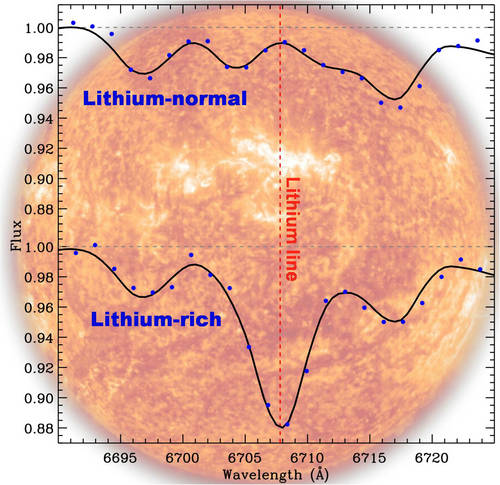Chinese researchers constructed a largest lithium-rich giant sample based on the LAMOST data
Recently, Qi Gao, a PhD student in National Astronomical Observatories, Chinese Academy of Sciences (NAOC), together with Prof. Jianrong Shi and Dr. Hongliang Yan, has found more than 10,000 lithium-rich giant candidates. This is currently the largest sample of such type objects, and the amount far exceeds the overall lithium-rich giants known to date. The result has been published in the Astrophysical Journal Supplement (ApJS, 2019, 245, 33).
Lithium is one of the most important light elements in the universe, and easily destroyed inside stars. According to the classic stellar evolution models, when a star evolves to the red giant stage, a large quantity of lithium would be destroyed, and the lithium abundance should be lower than 1.5 dex after the first dredge-up. However, the discovery of the first lithium-rich giant in 1982 caused a sensation in the field of stellar physics, which challenges the classical stellar evolution model. In order to solve this scenario, astronomers have made great efforts both in observation and theory. The lithium-rich giants are very rare, accounting for only about one percent. As the number of such type objects is limited, it is difficult to define their characteristics. Therefore, the discovery of more lithium-rich giants will be the key to explain this phenomenon.
LAMOST, the telescope with the highest spectral acquiring rate in the world, have obtained a huge amount of spectra, which provides an excellent opportunity to look for lithium-rich giant candidates. Based on the low-resolution spectra and the stellar atmospheric parameters provided by the LAMOST database, they determined the lithium abundances. Finally, more than 10,000 lithium-rich candidates were extracted from a sample over 810,000 giants after the human eye inspection.
This sample will help the researchers well determine the properties of the lithium-rich giants, and will provide a reliable observational basis for the theoretical models. This will have a profound impact on the research of lithium-rich giants, and will also deepen our understanding of the stellar evolution and the stellar internal structure.

Figure: Spectra centered at the lithium absorption line. The top one shows a spectrum of a lithium-normal giant, while the bottom shows a spectrum of a typical lithium-rich giant where the lithium absorption line is very deep (Credit: LAMOST)
This Paper Link: https://iopscience.iop.org/article/10.3847/1538-4365/ab505c